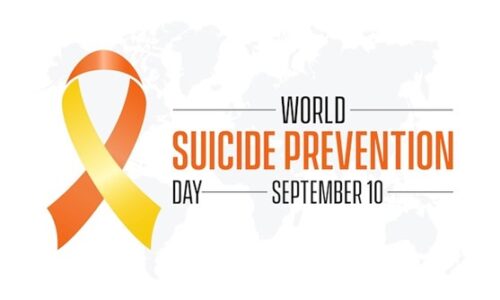There’s a lot of risk that mental health will decline as well as suicide thoughts and behaviours will rise as the Australia continues to battle an ongoing pandemic, financial crisis, and changing political environment. Suicide prevention programs in Queensland saves lives.
The psychological health of an individual is influenced by the quality of his or her work. However, the health of an individual is negatively affected if the working environment is adverse or if there are work-related stressors.
Organisations in Queensland must evaluate their role in preventing suicide deaths, as well as strategise about how to help those considering suicide and support suicide survivors after the death of a coworker now, more than ever. Those in positions of responsibility at work should take measures to promote the mental health of their employees and establish plans to support employees and colleagues with mental health conditions or at risk of suicide by adopting a plan to support them.
Queensland Suicide Statistics
From 1999 to 2021, suicide deaths in Queensland increased. In 2021, there were 813 Queenslanders suspected of killing themselves. This figure was 35 more than the previous year (778). The number of suspected suicides increased by seven in 2021 compared to 2017 (806). Queensland residents have died by suicide at the highest rate in a calendar year before. There are likely to be more suicides in QLD in the future because of population growth, which increased by 0.9% from June 2020 to June 2021.
It appears that most suspected suicides were committed by those between the ages of 20 and 59 in QLD. The percentage of males was 72.0% while the percentage of females was 71.4%
Major occupational group by sex, people dying by suicide in Queensland, 2016 to 2018
Different occupational groups face different stressors that could influence suicide risk. In addition to work culture, workload, occupational risks, and exposure to stressful or traumatic events, these stressors can negatively impact employees’ health and wellbeing.
646 (84.8%) of those who died by suicide were reportedly employed at the time of their death. Workers and machine operators/drivers were the largest occupation group killed by suicide in Queensland between 2016 and 2018. They were made up of 179 males (9.8%) and 15 females (2.7%).
Next most frequent occupational group were technicians and trades workers (142, 6.0%). Using occupational-specific suicide prevention activities is important for trades workers, according to this data.
Suicide Risk Factors at Work
The Queensland Key Statistics for 2021 show that 5% of serious claims are related to mental health stress, compared to 9% at the national level. A total of 11109 mental stress claims have been made nationwide, while in QLD 1390 have been filed. As a result, mental health and employee wellbeing are becoming increasingly important. Because mental health conditions may increase a person’s risk of suicide.
Suicide is a complex issue that is influenced by various life factors, including individual attributes, environmental conditions, and access to lethal means. As a result, identifying employees at risk is a challenging process.
Social and psychological pain might be the central causes of suicide-related behaviour. Work is a social institution by nature. It can give a sense of community, but it can also give psychological pain, too. Many factors contribute to the development of suicide-related thoughts and behaviours among employees.
These could be:
- Relationships with others,
- Conflict between work and family,
- Instability in the workplace,
- Among the causes of unemployment are burnout, fatigue, and burnout
- Working conditions – workload, stressors, schedules, etc.
- The job characteristics, and
- The physical work environment.
As demonstrated by this wide range of predictors, suicide is not confined to a single industry or occupation. Suicide can develop from social or psychological pain, both of which can be triggered by unhealthy work environments.
Therefore, all organisations should be aware of their influence on employees’ mental well-being, as well as steps they can take to reduce suicides. A company should also be prepared to respond to a suicide death, known as a postvention strategy.
Strategies for preventing suicide
Organisations have an obligation to prevent suicide-related deaths because of workplace factors. Organisations can use strategies to proactively address suicide:
Create a respectful, inclusive work environment.
Being socially connected helps employees feel part of the work community and fulfill their belongingness needs. It’s important for all employees to foster social connections, but it’ll get more important as more employees telework and work alone due to current conditions and tech changes. Workplace suicide prevention programs should include inclusion.
Employees can collaboratively reach goals and share ideas through mentoring programs and team-based work projects. Informally engaging employees can also build social bonds and has been demonstrated to positively impact job satisfaction and well-being. A workplace culture that encourages respectful communication and behaviour is crucial for providing such opportunities.
There is an increase in disrespectful behaviour, sexual harassment, and bullying in the workplace. The behaviour of these employees not only destroys social bonds, but also isolates them from their colleagues. Possibly at-risk employees are more likely to have thoughts and behaviours that lead to suicide.
Find out if there are any at-risk employees.
Employees at risk of suicide should be identified by managers, supervisors, and HR professionals.
Even if an employee hasn’t explicitly mentioned suicidal thoughts, managers need to understand these factors so that they can provide them with appropriate support.
Occupational risks, work culture, workload, and exposure to stressful or traumatic events can impact personal health and wellbeing, according to the Suicide in Queensland report.
Changing work status, such as restructuring or layoffs, can boost suicidal ideation and behaviours among affected employees. Access to mental health resources and employee assistance programs should be part of any organisational change or termination agreement.
Employees who are at risk and meet these criteria are not necessarily going to engage in suicidal behaviour or thoughts.There is no doubt that having a mental illness increases one’s vulnerability to suicide, but not all individuals with a mental illness attempt suicide.
In light of this, employers should also pay attention to their employees’ language, emotions, and behaviour changes, and how they affect their performance. There are several signs that indicate someone may be experiencing distress, including withdrawing themselves, becoming anxious, and having extreme mood swings, as well as speaking of burdening others, hopelessness, or having no reason to live.
As an example, if an employee has recently lost a family member and has been very withdrawn at work for several weeks, managerial intervention might be of assistance. Providing information and assistance related to mental health resources available to the employee is one method of intervening.
Sometimes, a manager may perceive that an employee is at risk, even though this is not the case. Reaching out and providing additional support is never harmful in these situations. Thus, managers shouldn’t be afraid of making a mistake. Furthermore, it is important to create an environment where employees feel comfortable seeking help from others rather than relying on others to notice.
Are there any tools we can give our managers to reach out effectively?
Simply recognising that a member of staff needs assistance is not sufficient. A manager, supervisor, or team leader needs to be prepared to provide assistance to individuals who require it. In order to prepare for a crisis, managers should be trained about mental health concerns, develop strategies for having challenging conversations, and develop action plans.
In order to reduce the stigma associated with suicide, organisations should invest in suicide and mental health training. Organisations that prioritise mental health may make it easier for employees to get help if they need it.
There are few training courses available to managers. That’s standard mental health first aid. As a result of this course, managers, supervisors, and team leaders will be able to initiate meaningful conversations with their employees.
CALM Suicide Intervention Skills and CALM Suicide Awareness Training. There are several suicide prevention and intervention programs available that provide employers with powerful information about suicide prevention and intervention, and help them begin suicide conversations with their employees.
WHS and Training Compliance Solutions, delivers elearning courses, standard mental health first aid, CALM Suicide Intervention Skills and CALM Suicide Awareness across QLD.
Plan how you will respond and take action.
Having a plan outlines who to contact and in what order if an immediate issue arises will help organisations act promptly and effectively. It’s also a good idea to compile a list of available resources and make these public, including the contact info for Employee Assistance Programs, local mental health providers, and support groups.
Check in regularly with employees to see how they’re doing and listen to their concerns without passing judgment. Employees appreciate these conversations because they let managers know what resources are available, and they are reminded they are supported and cared for. In addition to monitoring changes in employees’ behaviour, managers provide them with information and resources for seeking help. Neither the manager nor the employee are expected to counsel one another or solve problems. As well as protecting the manager’s well-being, making sure this boundary is maintained is also important.
As a Final Note
Managers should pay attention to important milestones or anniversaries that may be difficult for suicide survivors in the long-term response. Respectfully remembering those who have died by suicide. As part of this process, we’ll need to keep investing in suicide prevention programs and policies.
The importance of well-being is recognised by many companies, but few have specifically addressed suicide. Policies and practices should specifically target suicide, since conventional well-being programs like mindfulness and yoga may not identify employees who are most at risk. The most important thing organisations can do to support their employees in crisis is to invest in suicide prevention programs. The investment will pay off if even one person is helped.
WHS AND TRAINING COMPLIANCE SOLUTIONS is proud to offer suicide prevention programs in Queensland, QLD. We understand the importance of mental health and the need for effective prevention strategies. Our programs are designed to equip individuals and organizations with the knowledge and skills to identify and support those at risk of suicide. Through comprehensive training, we aim to raise awareness, reduce stigma, and promote early intervention. Our team of experienced facilitators are committed to providing evidence-based practices and ongoing support to ensure the success of our programs. With a focus on creating safe and supportive environments, we aim to make a positive impact on the mental well-being of individuals and communities across Queensland. Contact us today to learn more about our suicide prevention programs and how we can help you create a safer and healthier workplace.












